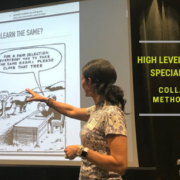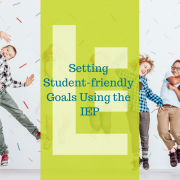Gender Distinctions on the Spectrum
According to the Centers for Disease Control and Prevention (CDC), boys are diagnosed with autism at a much higher rate than girls. In fact, for every four boys diagnosed, only one girl will be diagnosed. There are many theories as to why this is the case, but one claim that is agreed upon by experts is that girls’ symptoms tend to be much more subtle and are therefore disregarded or overlooked. Instead of seeing certain tendencies and behaviors as potential symptoms of autism, parents often consider these behaviors to be minor “quirks” which their daughter may outgrow. While every child is different and autism presents in a variety of ways regardless of gender, there are known commonalities that specifically present in girls on the autism spectrum.
For girls, autism symptoms tend to revolve more around communication and socialization, as opposed to boys, who often present with more obvious symptoms related to impulsivity and repetitive outbursts. Furthermore, typical gender norms indicate that girls are often more content to play by themselves or engage in sustained quiet time on their own, as opposed to boys who prefer camaraderie and peer play. That said, a boy who withdraws from peers and fails to meet standard social benchmarks would draw more attention than a girl with the same social impediments simply due to society’s expectations of gender norms. Again, this is why many experts believe that autism diagnoses in girls are delayed or sometimes overlooked completely.
Similarly, since girls tend to mature earlier than their male counterparts, their level of self-awareness and social cues tend to be further developed as well. Because of this, girls on the autism spectrum may be more inclined to study others’ behaviors and react accordingly, almost learning how to mask their social struggles by observing others. Meanwhile, boys may miss cues altogether and therefore receive a diagnosis earlier on.
An additional concern for girls with autism is the fact that they can be especially naive to the world around them. They may experience difficulties in social situations or misread social cues, which often leads to instances of bullying or harassment. This naïveté can make it difficult to discern another’s tone or intentions and can cause them to become even more isolated from their peer group. A girl on the autism spectrum may not realize that her interests are not shared by other girls, but will insist on driving the conversation or focus to her specific interest. Again, this can cause friction with peers since the child may not fully understand why others are rolling their eyes, ignoring her, or outright dismissing her.
Finally, girls with autism may experience specific “obsessions” just as boys do; however, with age, parents might notice that her interests do not evolve as would be expected. Often times, an obsession becomes more noticeable as the child gets older because the interest is markedly different from the typical girls her age. For instance, instead of developing an interest in nail polish or drawing, a girl with autism might obsess over toy horses or stickers even as she begins to go through puberty. These seemingly immature interests can also contribute to social issues at school, such as bullying or isolation by peers.













